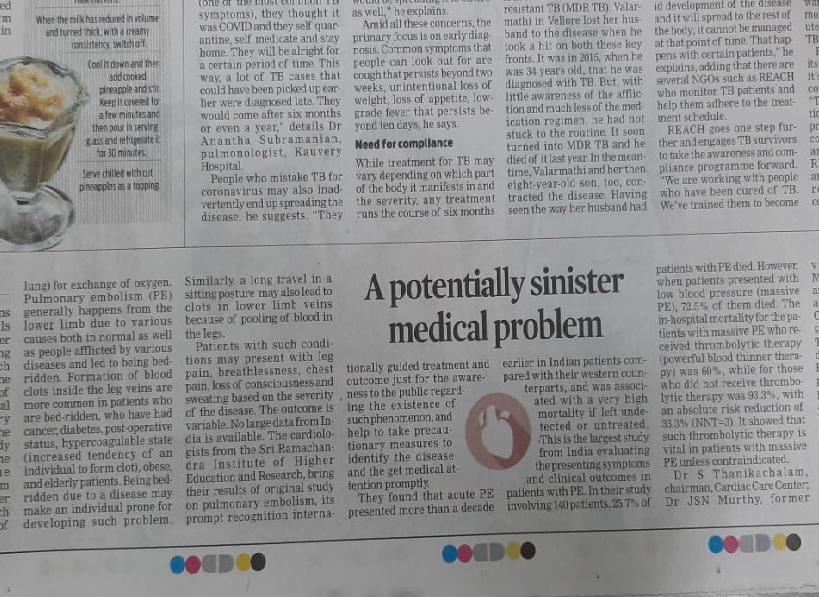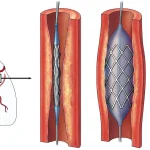A POTENTIALLY SINISTER MEDICAL PROBLEM
The term embolism means travelling of materials from one place to another in the body, and clumping an artery or a vein. Such phenomenon can happen in the arterial or venous bed. One of the potentially sinister medical problems is pulmonary embolism. We know that all the impure blood from our body reaches the right side of the heart from which the pulmonary artery carries them into the lung to reach smaller capillaries surrounding each alveolus (gas exchange unit of lung) for exchange of oxygen.
Pulmonary embolism (PE) generally happens from the lower limb due to various causes both in normal as well as people afflicted by various diseases and led to being bed-ridden. Formation of blood clots inside the leg veins are more common in patients who are bed-ridden, who have had cancer, diabetes, post-operative status, hypercoagulable state (increased tendency of an individual to form clot), obese, and elderly patients. Being bed-ridden due to a disease may make an individual prone for developing such problem. Similarly, a long travel in a sitting posture may also lead to clots in lower limb veins because of pooling of blood in the legs.
Patients with such conditions may present with leg pain, breathlessness, chest pain, loss of consciousness and sweating based on the severity of the disease. The outcome is variable. No large data from India is available. The cardiologists from the Sri Ramachandra Institute of Higher Education and Research, bring their results of original study on pulmonary embolism, its prompt recognition internationally guided treatment and outcome just for the awareness to the public regarding the existence of such phenomenon, and help to take precautionary measures to identify the disease and the get medical attention promptly.
They found that acute PE presented more than a decade earlier in Indian patients compared with their western counterparts, and was associated with a very high mortality if left undetected or untreated. This is the largest study from India evaluating the presenting symptoms and clinical outcomes in patients with PE. In their study involving 140 patients, 25.7% of patients with PE died.
However, when patients presented with low blood pressure (massive PE), 72.5% of them died. The in-hospital mortality for the patients with massive PE who received thrombolytic therapy (powerful blood thinner therapy) was 60%, while for those who did not receive thrombolytic therapy was 93.3%, with an absolute risk reduction of 33.3% (NNT=3). It showed that such thrombolytic therapy is vital in patients with massive PE unless contraindicated.
Dr S Thanikachalam, chairman, Cardiac Care Center; Dr JSN Murthy, former vice-chancellor; Dr TR Muralidharan, HoD Cardiology, and Dr S Nagendra Boopathy, associate professor of Cardiology, conducted this study along with their team. They said that PE is a killer disease that is often missed. Public education of this illness, promptly recognising acute pulmonary thromboembolism and the concept of Pulmonary Embolism Response Team (PERT) with the creation of regional centres of excellence serving such patients will likely be instrumental in achieving improved patient outcomes.
Source




